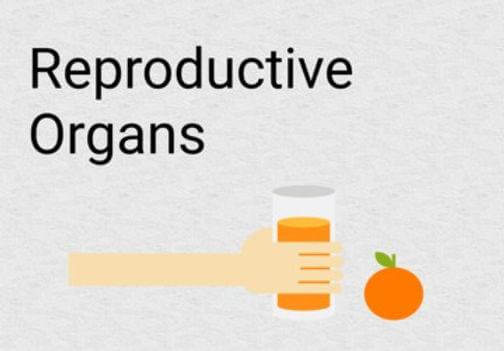Author: Randeep Singh / go to all articles on Yoga cure
Yoga for Reproductive Organs:
Nature has instilled a reproductive, procreative instinct into all living beings, in order to ensure the survival of their species.
The process of reproduction is antagonistic to the process of death; if there was no death, reproduction wasn’t required. According to Samkhya studies, the material world remains in a constant whirlwind of change, destruction and creation go hand in hand. Yoga for reproductive organs help improve the quality of the creation process.
This procreative instinct operates within human body at the physiological level through the reproductive organs. The reproductive organs, termed indriyas in Samkhya, are the sum total of all the glands, organs and the related paraphernalia, though different in both the sexes, work together to create a new life, or a being. Since two sexes are involved in making a baby half of the reproductive material is supplied by each one of them.
Male reproductive system is majorly present outside the body hanging in a pouch called the scrotum which houses two oval shaped testes within which the sperm (male half of reproductive material) is formed and stored under temperatures lower than the normal body temperature.
The females has been entrusted with the task of providing the place for the meeting of both the reproductive materials ( fertilization) as well as for keeping the fertilized egg within itself till the newly formed being is ready to be delivered to the outside world.
Thus the female reproductive system first has to receive the sperms from the male (which the male delivers via a hose like structure known as the penis) into the vagina which opens reversely into the uterus (The pouch where the baby develops) through cervix. The uterus is connected to the two ovaries (female equivalents of male testes) with two fallopian tubes into which the egg released form the ovaries meets the sperm for fertilization.
After fertilization the egg sticks to the inner wall of the uterus where is grows for approximately nine months till it is big enough to be finally delivered out. In males the sperms are formed in noodle like tubules called the seminiferous tubules. Sperms have a head (which contains the genetic material) and a tail which keeps them mobile.
From seminiferous tubules the sperms enter the epididymis for further development. After maturity the sperms move into vas deferens, whitish secretions from the prostate gland, and the seminal vesicles is mixed with the sperm to form the semen.
The semen carrying the male gamete ( sperm) passed into the female vagina during sex via the urethra which runs along the length of the penis till it opens out of the body via a opening at the tip of the penis ( glans). In males the urethra serves the dual purpose of transporting the urine ( from the bladder) and semen ( from the vas deferens) to the outside of the body.
Unlike males, the female reproductive organs are majorly located within the lower abdominal cavity as the process of fertilization and the development of the fertilized egg into a baby needs securer surroundings.
Externally the female genitalia consist of labia majora, labia minora, bartholin’s glands, clitoris, and the vaginal opening. The males have the tip of the penis covered with a moist skin like covering ( to preserve its sensitivity to manual stimulation) which is known as the foreskin.

Benefits of Yoga for Women & Men
The genitals have been inherently built to be fragile and sensitive, rather sensitivity is imparted to this region of the body by the lord so that the two types of sensitivities ( male & female genitalia) can draw towards each other in passion ( sex) to fulfill the first step of procreation. Thus the very first requirement of any yoga for reproductive health would be that it be very gentle and sensitive to the reproductive organs.
Conceiving has been found to be more successful in a subtle, sensitive, and relaxed environment not a vigorous one, nature loves procreating in a calmer environment. Any yoga techniques which can be considered under the tile of yoga for conceiving has to have the calming and relaxing effect on the body via the mind.
Fertility yoga poses help create an internal environment in the body which is conducive to reducing chronic inflammatory condition in the reproductive organs. Yoga for conceiving help keep the hormones regulated which helps deepen the sleep, and fight undue stress on the mind and the body, all the condition which can harm the health of the reproductive organs.
A strong sense of belonging, sharing, and commingling has been naturally instilled within the human mind, anything that cuts one away from the other beings is harmful to the reproductive health. Our group yoga sessions at Bandra for pregnancy like the one at the shahzadpur yoga classes provide one with an opportunity to breathe, move, and sweat with other, enhancing one’s sense of community and belonging.
The sense of belonging is naturally relaxing by nature which ups one’s chances of getting pregnant. Fertility yoga exercises flushes the nutritive blood to the reproductive organs, the blood enriches inner lining of the female reproductive system is more conducive to sticking a fertilized egg on to it.
Yoga for female reproductive health works by opening the hips and enhancing the flexibility of the pelvic joints, joint s of the pelvis are the most fused and thus inflexible in the entire body. Flexibility of the pelvis region is a must for the baby to pass through it during the birthing process, moreover a flexible pelvic region adds flexibility, and in turn to the functioning of the organs systems placed within the pelvic bowl like the reproductive organs.
Ladies Yoga , and Male fertility Yoga
Other Informative Articles….

